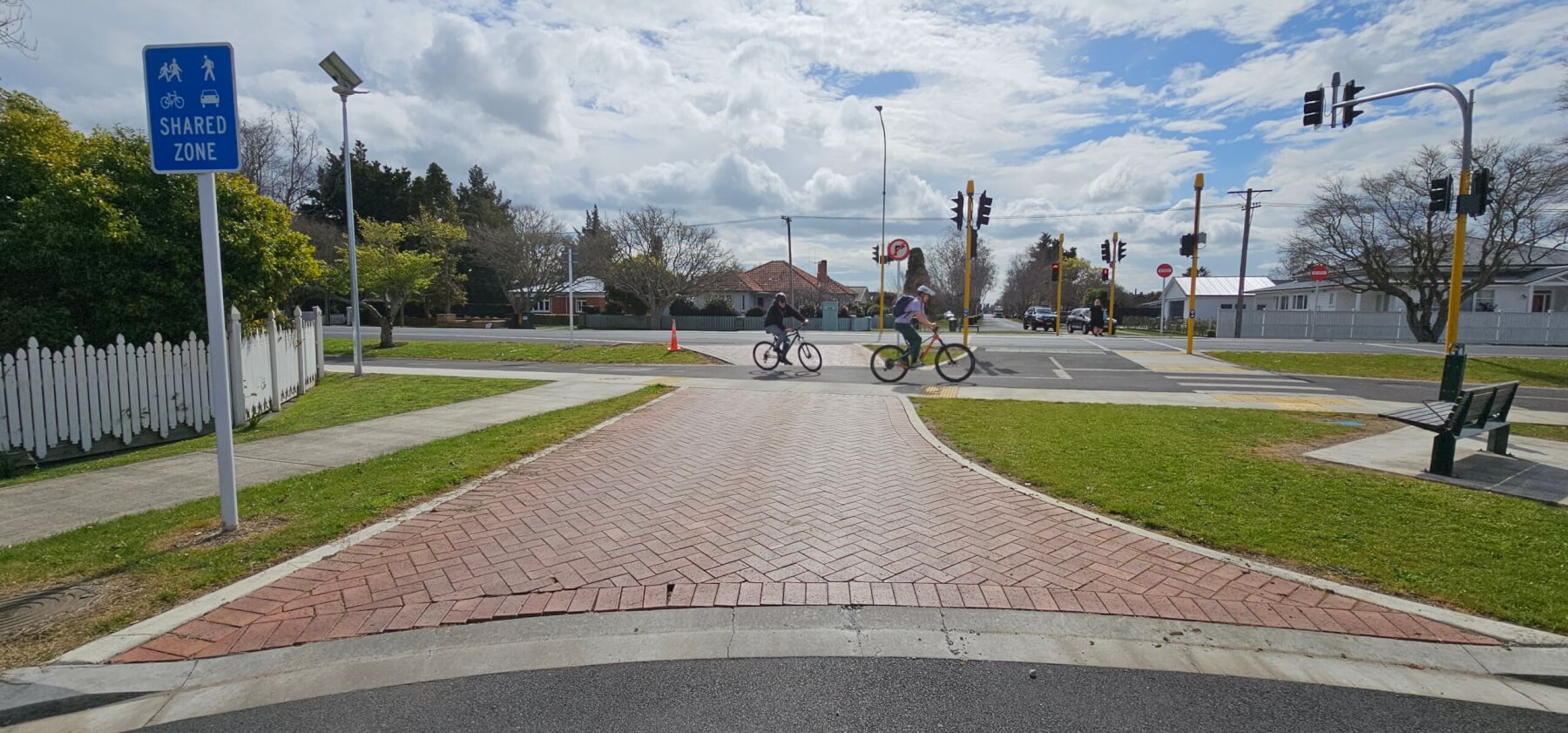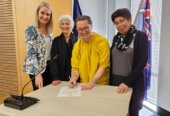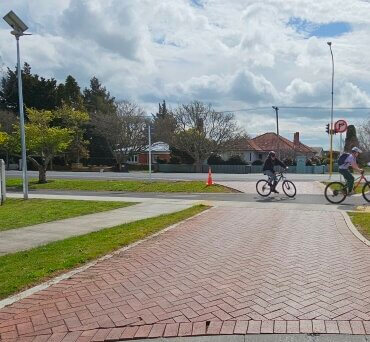
A narrow escape while riding on the Hamilton Road Cycleway prompted senior writer Mary Anne Gill to do some investigating into shared zones.
The shared zone at the intersection of Grey Street and Hamilton Road Cycleway.
It was about 9.15am and I was cycling back into Cambridge along the Hamilton Road Cycleway.
Just before Grey Street I slowed down, as I tend to do before streets and driveways. Just as well I did because the driver of a concrete truck made no attempt to check whether anyone was coming either on the cycleway or the footpath. He drove up Grey Street, over the coloured paving, the footpath and the cycleway to the Hamilton Road intersection, and waited. His truck took up the whole “shared” space while he waited for a gap in the traffic.
In the truck driver’s view, the shared zone meant he could do what he wanted, to him it was just a part of a normal road. In a hierarchical sense, he felt he had the right of way.
A shared zone is defined in the Land Transport (Road User) Rule 2004 as “a length of roadway intended to be used by pedestrians and vehicles”.
In shared zones, the needs and comfort of pedestrians (and in this instance cyclists) are paramount. People driving in shared zones are expected to act like guests, the rules say.

Bryan Hudson
Waipā District Council Transportation manager Bryan Hudson is an expert on all things cycleway and shared zones.
“The driver should most definitely have reduced his or her speed and checked, but not necessarily come to a complete stop. Considerate and careful drivers will always use common sense and will always be aware of their surroundings, especially in an urban environment.”
It got me thinking: How would a youngster cycling to or from school or up to the sports grounds understand the rules around shared zones along the stretch of cycleway with roads and driveways dotted in between?
Hudson does not necessarily agree we need more education around shared zones but did say the council’s road safety co-ordinator offers cycle skills’ training in schools. There is one coming up at Cambridge Middle School early next year.
And what about signs telling cyclists to slow down in case traffic is coming?
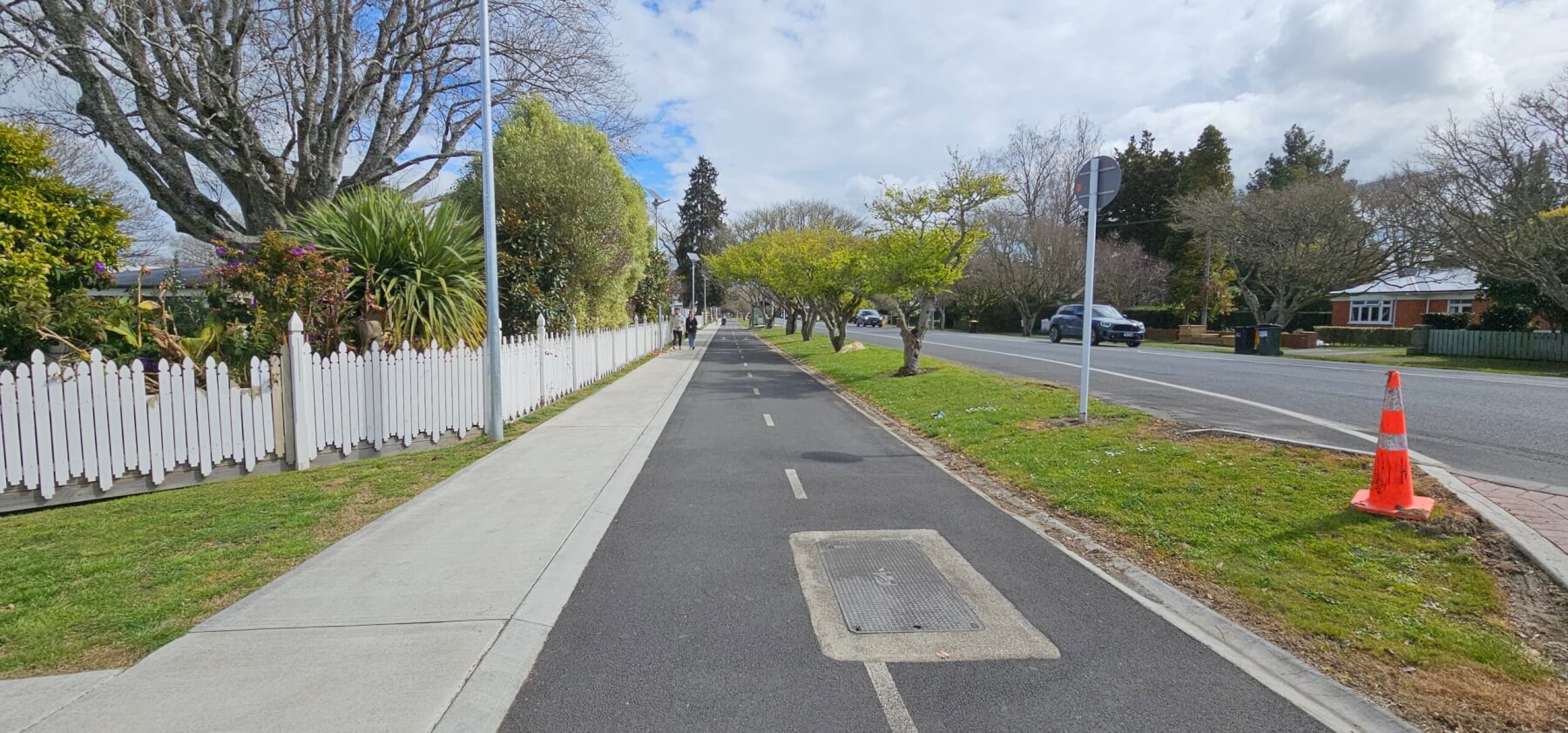
Stopping in the shared zone in this instance is allowed as the pedestrians are some way from the intersection.
“No, it is best practice to do it the other way around – making the less vulnerable take greater responsibility. So, we ask drivers to slow down and look for cyclists. Saying that, it’s also important cyclists also keep their wits about them, that’s just common sense, and most cyclists are already very aware of vehicles. While path users should have priority, they still need to exercise caution, and be ready to react.”
I recall several years ago when I was in Europe – travelling in Holland, France and Italy – that cars, cycles and pedestrians seemed to get on with each other in the city centres in a respectful way.
Shared zones are common there, less so here in New Zealand.
Hudson suggests pedestrians and cyclists on the Hamilton Road Cycleway should be watchful, and I agree with him, to a degree.
But isn’t it time some of our drivers showed the same vigilance, the same respectfulness and courtesy as they do in Europe?
- Have your say. While we do expect to hear some stories of disrespectful lycra-wearing cyclists, that’s not me!
- Email [email protected]
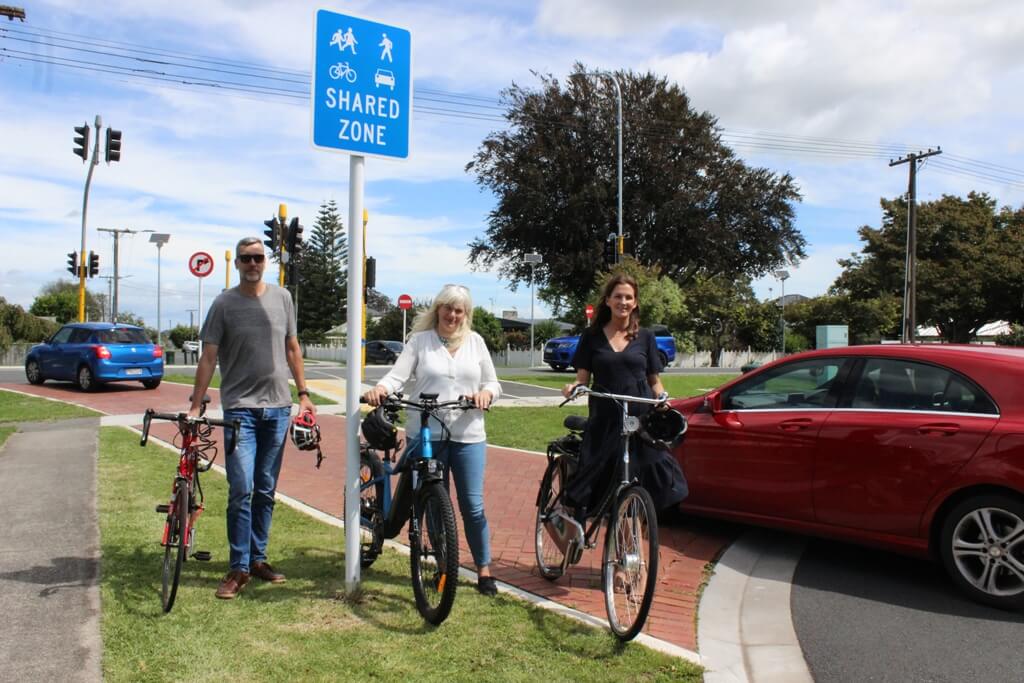
Safe space? Waipā Transportation programme engineer Erik Van Der Wel, left, with deputy mayor Liz Stolwyk, centre, and community board chair Jo Davies-Colley. Photo: Mary Anne Gill



